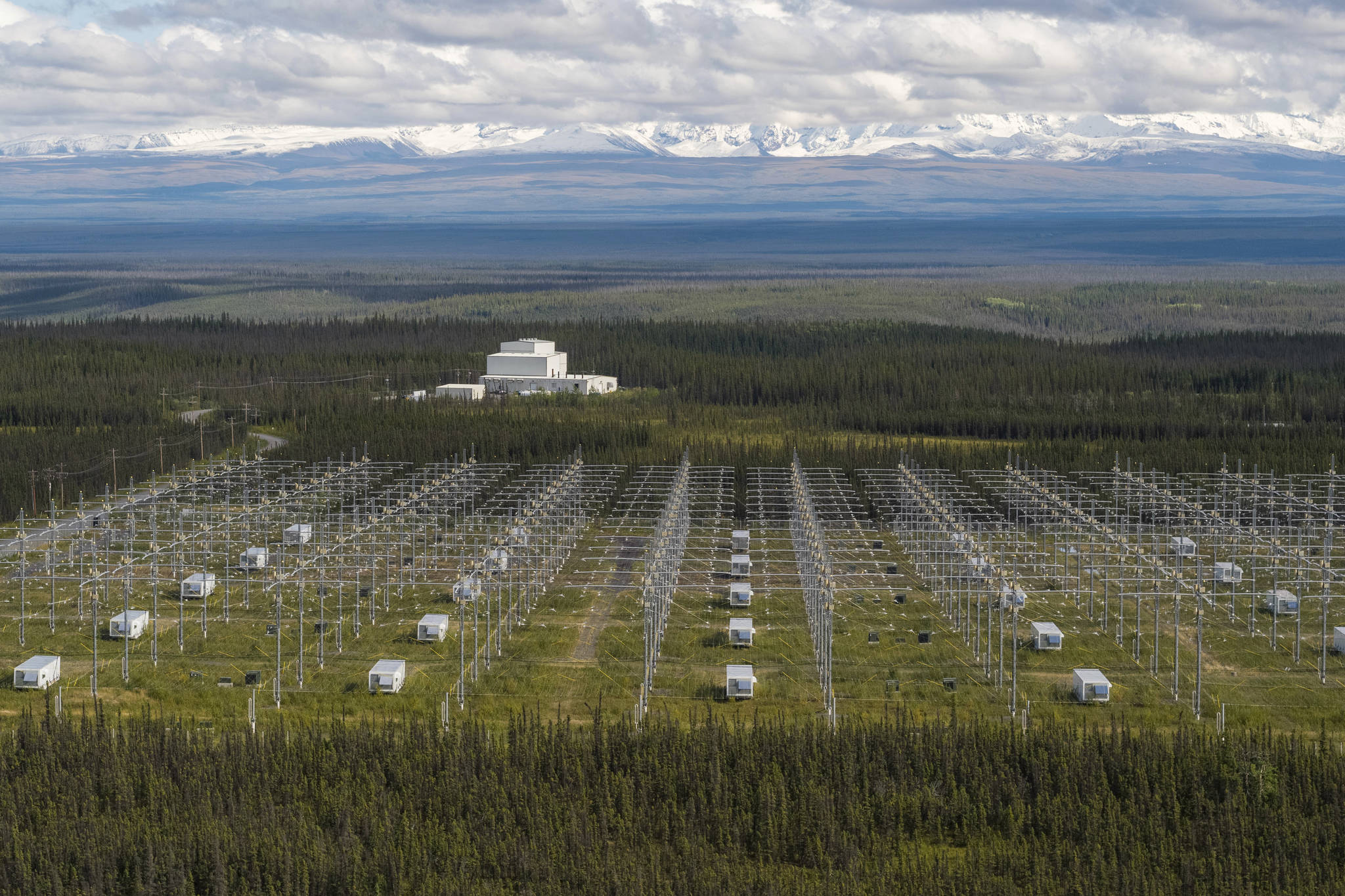GAKONA (AP) — HAARP has an image problem that’s proving hard to shake. Short for High-frequency Active Auroral Research Program, HAARP has been the subject of conspiracy theories ever since the U.S. military started building it in the early 1990s.
HAARP has a number of scientific instruments on its campus, but the one that continues to capture the imagination of conspiracy theorists is the Ionospheric Research Instrument (IRI), the world’s most powerful high-frequency radio transmitter.
The IRI is an intimidating sight. Comprised of 180 phased array antennas, each standing 72 feet tall, the antennas are spread out over about 30 acres in Gakona, basically the middle of nowhere Alaska. For a long time it was operated by the Air Force, Navy and the Defense Advanced Research Projects Agency, and was largely closed to the public. One can see how conspiracy theories start under those conditions.
The former governor of Minnesota, Jesse Ventura, claims HAARP is a mind-control device. Others say it can control the weather. Venezuelan president Hugo Chavez said it was used to create the devastating 2010 Haiti earthquake.
None of that is possible, says Bob McCoy, director of the Geophysical Institute at the University of Alaska Fairbanks, which operates HAARP. “No, it’s not a weapon, and it couldn’t be,” he said, standing under the towering antennas. “The way high-frequency radios work is that the atmosphere is transparent to those signals. If we made this 10 times bigger and tried, we still couldn’t affect the weather. Minds? Electrical signals in the mind are very low frequency. HAARP is very large frequency, the waves are meters-long. So there’s no way they could control minds.”
When the Air Force transferred ownership of the facility to UAF in 2015, the university decided to start a tradition of opening the gates for an annual open house, hoping to quiet the conspiracy theories.
On Aug. 25, about 260 people showed up, including Gakona locals, military families from Anchorage, and a Japanese film crew. The facility was for the most part wide open, and visitors could wander through the antenna array, asking questions of the staff there.
But even with this new openness, changing minds is hard. “People like conspiracy theories,” said McCoy. “People like UFOs. No matter what you do, no matter how many years you go without conclusive evidence, people still believe in UFOs.”
Al Zehelski, who lives in Eureka, visited HAARP during the first open house in 2016.
“Does it make rain? Who’s to know,” he said. “The government tells you some things, and the media tells you another. Even though it’s open to the public, there’s a lot of things they don’t tell you about it. Or what it does.”
Zehelski, who says he is an Army vet, is unfazed by the open houses. “We’re not getting the whole truth,” he said, “and there’s still classified information about that facility.”
UAF’s McCoy would prefer that people focus on the research that HAARP allows scientists to do. “We can transmit signals all around the world,” he said. “It basically makes the ionosphere a laboratory, and we can do experiments that no one else can do. It’s a laboratory without walls.”


